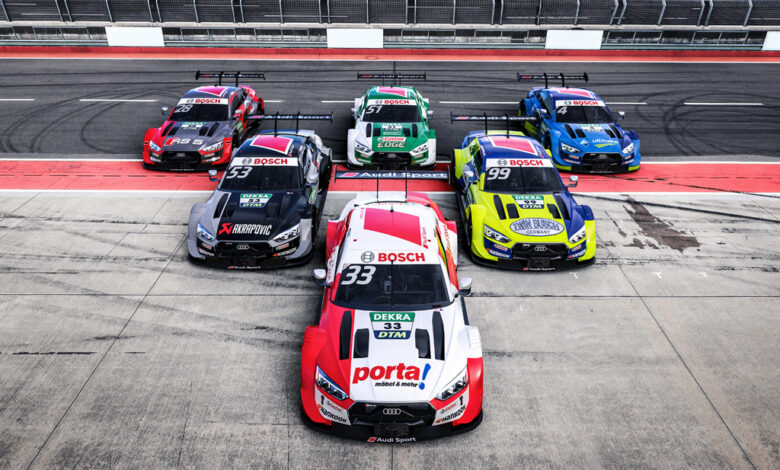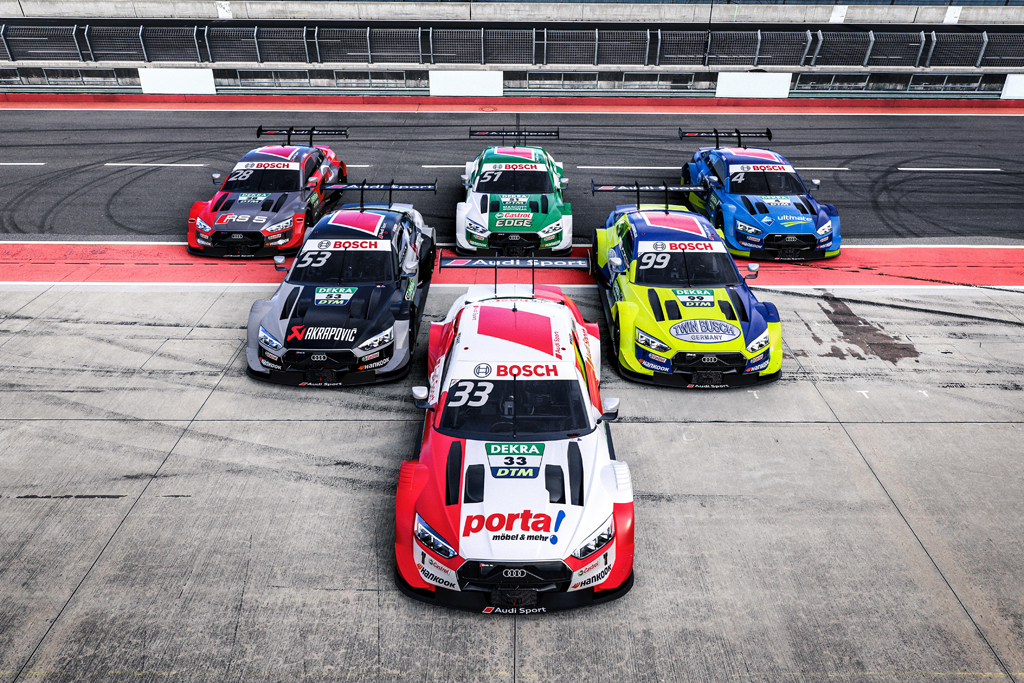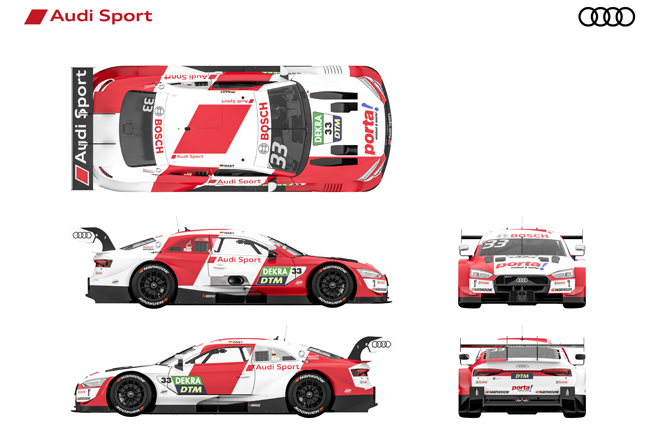
Audi RS 5 DTM: a new thing for the championship car
In the 2019 season of the DTM racing series, the Audi RS 5 DTM was unbeatable. Now, as part of a title defense project, the car has been optimized in detail. At the same time, Audi Design gave the six factory models a completely new look.
New Audi RS 5 DTM
Last Saturday, Audi unveiled the new RS 5 DTM to defender René Rasta (D) on social media. It's time to present the livery of the remaining five Audi RS 5 DTM cars that will be taking part in this year's DTM racing series and will be driven by: Loic Duvall (F), Robin Frains (NL), Jamie Green (UK), Nico Muller (CH) and Mike Rockenfeller (D).
René Rast will be supported in the title defense project by Porta Möbel. It is Germany's largest furniture manufacturer with around 8,000 employees. Other sponsors of Audi competitors for the 2020 DTM season are TWIN BUSCH, BMC Air Filter and Riedel Communications.
Mike Rockenfeller, 2013 DTM champion, will drive this year's Audi RS 5 DTM in the blue and yellow livery of TWIN BUSCH, a professional bodyshop outfitter. Loic Duvall, in turn, will receive a red-grey Audi RS 5 DTM BMC air filter. This Italian air filter company has already demonstrated a Duval vehicle at the joint DTM and SUPER GT event "Dream Race" in Fuji at the end of 2019.
Fans of Jamie Green will have to get used to the new colors of their champion's car. This season, the longest running four-ring DTM driver starts in a black and gray Audi RS 5 DTM Akrapovic. Nico Muller and Robin Frains will represent Castrol EDGE (green and white) and ARAL Ultimate (blue) respectively.
Audi Sport has been using the RS 5 coupe in the DTM series since 2013. In order to start the 2020 season, Audi - the winner of the 2019 season - had to go through a series of detailed changes aimed at optimizing costs, according to the new DTM regulations.
However, these fundamental technical changes were not included in the class 1 rules introduced in the DTM in 2019 and were aimed at leveling the playing field and improving cost efficiency. Consequently, the 2020 Audi RS 5 DTM is largely based on the 2019 championship car. With the introduction of the new class 1 rules, which will also apply to the Japanese SUPER GT series from 2020, the DTM has already started to complete a new technical era.
The introduction of turbo technology in this race series brought DTM cars closer to stock cars. Compared to the previous season, the TFSI engine output of the 2020 Audi RS 5 DTM has been reduced by around five percent. Background: For the 2020 season, the DTM series regulation has reduced the amount of fuel that can enter an engine per hour from 95 kilograms to 90 kilograms. Thanks to the "Push-to-Pass" function, the engine power can be increased briefly to approximately 640 hp. This should make racing even more exciting.
From the 2020 season, DTM drivers will be able to use the Push-to-Pass system – for overtaking, for example – twice as often as in the 2019 season, by five seconds. In addition, the Push-to-Pass system is now allowed in qualifying. The new qualifying rules also cover the use of the DRS (Drag Reduction System) feature, which smooths out the rear spoiler, reduces vehicle drag and increases top speed. From the 2020 season, the DRS will also be able to be raced more frequently than before. Thanks to the combined use of the DRS and Push-to-Pass functions, the Audi RS 5 DTM reaches a top speed of almost 300 km/h depending on the track conditions.
Already in the first year of operation of the new class of Class 1 racing cars, Audi has established itself as a leader in the production of high-performance turbocharged engines with its success on the track. In the 2019 season, four rings won all three championship titles before the end of the season: drivers, teams and manufacturers.
The DTM is the third pillar of AUDI AG's motorsports program alongside Formula E and customer racing. The unique DTM Class 1 racing cars are powered by high-performance two-litre turbocharged four-cylinder engines. This type of drive – albeit with varying levels of efficiency – is used by Audi in many production models and is the backbone of efforts to improve efficiency and reduce pollutant emissions across the entire four-ring fleet.
“In the near future, Audi will continue to sell more vehicles with internal combustion engines than with electric motors,” says Audi Motorsport chief executive Dieter Gass. "That's why a racing series with cars powered by modern, efficient internal combustion engines, along with our commitment to Formula E racing, makes sense."
Photo: Audi











